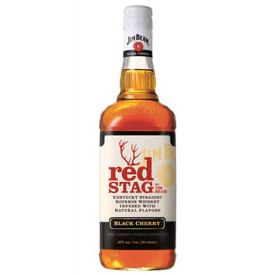I’m a little late again this month but I have good reason. I reinjured my right ankle and as a result I’ve been medicated and hobbling around. It’s an old injury that actually goes all the way back to fourth grade. My MRI results are pending and it hurts. It is what it is. This is just an excuse on my part. There’s really no good reason why I couldn’t have posted this on time so here goes.
Bruichladdich 10 Year Old
Timeframe: TBD
ABV: 46%
Price: TBD
Bruichladdich is back. Well, they’ve been back. Now they are back with their own 10 Year Old from entirely new production stock.
2011 Buffalo Trace Antique Collection
Timeframe: October 2011
ABV: Varied
Price: $70
The whole gang is back again. All five releases are coming back this year. George T. Stagg, Sazerac 18, Eagle Rare 17, William Larue Weller, and Thomas Handy will be available in October.
Bunnahabhain Vintage
Timeframe: 2012
ABV: 43%
Price: TBD
Starting next year Bunnahabhain will be replacing their 18 Year old with a vintage release. For fans of the 18 Year Old you better pick it up while you can!
Elijah Craig 20 Year Old
Timeframe: Now
ABV: 45%
Price: $275
The rub on this one, aside from the price (EC 18 is about $60), is that it’s only available at the Bourbon Heritage Center in Kentucky.
Glen Garioch 1994
Timeframe: Fall 2011
ABV: TBD
Price: $109.99
This vintage release is supposed to showcase a slightly smokier side of Glen Garioch.
Glenrothes 1995
Timeframe: Fall 2011
ABV: TBD
Price: $TBD
This is the newest edition to Glenrothes ongoing vintage releases.
Glenrothes Editors Cask
Timeframe: Winter 2011
ABV: 55.8%
Price: $250
This new limited edition will see only 130 bottlings coming to the U.S. later this year. This one comes from a Spanish hogshead and is cask number 9973.
High West OMG Rye
Timeframe: Fall 2011
ABV: 49.3%
Price: TBD
This is a new un-aged rye from High West. It’s 100% rye, 20% malted. High West has caused some controversy in the past but I like their stuff and look forward to giving this a try.
Johnnie Walker Double Black
Timeframe: October 2011
ABV: 40%
Price: No price yet but it’s expected to retail for 15% to 20% above standard JW Black.
Think of this a more heavily peated version of JW Black. Interested? I am. This one was available in travel retail only for a while. I’m glad it’s making to release.
Macallan 60 Year Old Lalique
Timeframe: Fall 2011
ABV: TBD
Price: $20,000
This is the fourth release in the Macallan Lalique series. Realistically for most of the us a $20,000 bottle of scotch is a pipe dream. However, it comes in a really pretty bottle. 😉
The Mackinlay
Timeframe: Fall 2011
ABV: 47.3%
Price: $162
This is the recreation Whyte and Mackay did of the whiskey found in the Antarctic that was all over the news a while back. It should be interesting. I’m supposed to have a review sample on its way. I’ll keep you posted.
Oban 18 Year Old
Timeframe: Fall 2011
ABV: 43%
Price: TBD
I like Oban but I feel that it tends to be overshadowed by its stable mates. Well, Diageo seems to be giving it a little more attention with the line expansion of adding the 18 Year Old as a permanent addition.
Redbreast 12 Year Old Cask Strength
Timeframe: 2012
ABV: TBD
Price: TBD
Okay Redbreast fans, the hits just keep on coming. First we got a 15 year release and now we’ll see the original 12 year old coming out in a cask strength version. I’ll definitely be picking some up.
Red Stag Honey & Red Stag Spiced
Timeframe: Early 2012
ABV: 40%
Price: $15
Apparently Red Stag was so popular that Jim Beam decided we need more. Two new flavors are coming to the market next year.
R&R Reserve Canadian Whiskey
Timeframe: Fall 2011
ABV: 40%
Price: $14.99
R&R stands for rich and rare. This new value release comes to us from Sazerac. Building on the previously release Royal Canadian and Caribou Crossing Sazerac continues to expand their Canadian offerings.
Temptation Bourbon
Timeframe: Fall 2011
ABV: 41%
Price: $22
This new bottling comes from Dynamic Beverages. They are the same folks bringing you Redemption Bourbon and Rye. This is another rebottling of bourbon produced by LDI. This one is from their mashed bill that uses a higher percentage of corn. It’s bottled at about two years old.
Woodford Master Cask Rye
Timeframe: Fall 2011
ABV: TBD
Price: $45 per 375ml bottle
There are actually two releases in this year’s Woodford release. Both are 100% rye triple pot distiller whiskeys. This is a first from Woodford. One is aged in new oak barrels and the other is aged in used oak barrels. This should be pretty interesting.
Glenfarclas Family Casks
Timeframe: TBD
ABV: TBD
Price: TBD
Not much news here. The Glenfarclas Family Casks have been available abroad for some time. They are finally going to make it stateside late this year or early next year. No word yet on which bottlings or prices.
That is all for September.
Drink wisely my friends,
Richard


